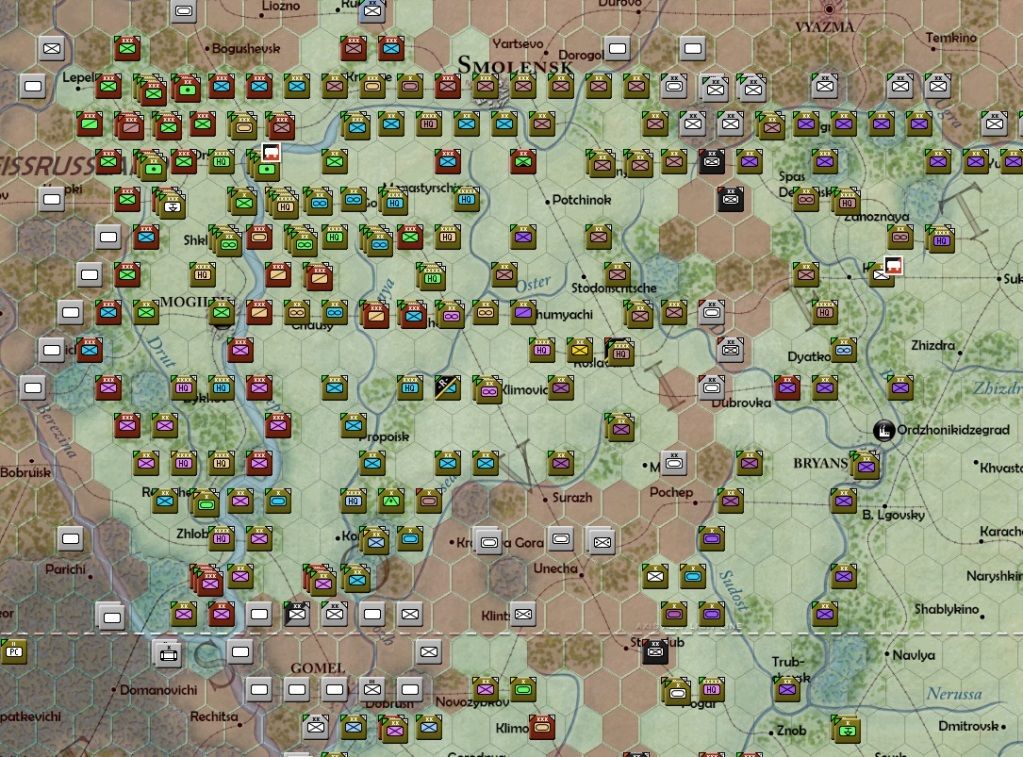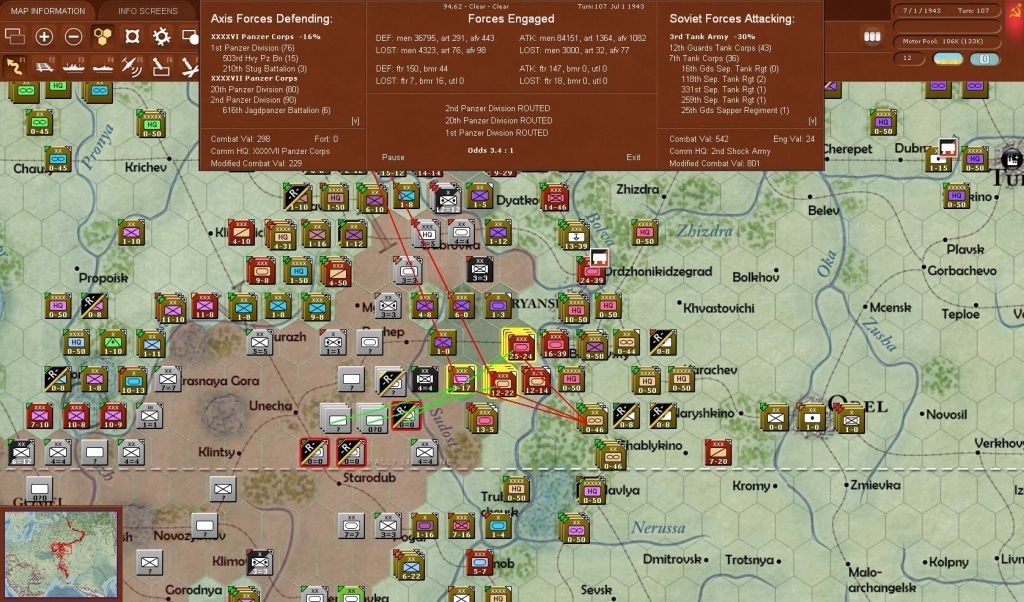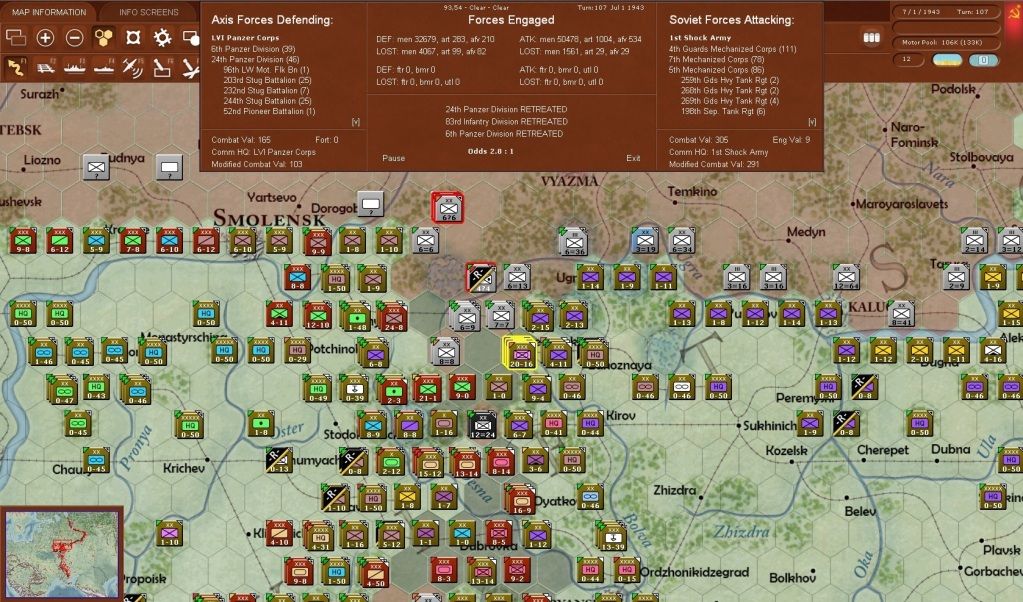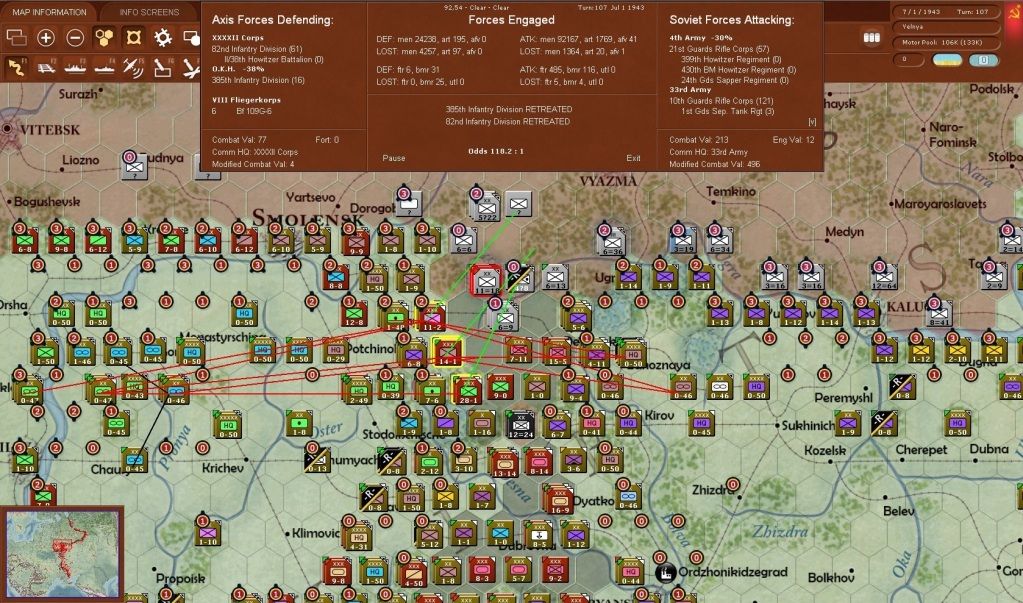Mud has largely halted all operations as both sides accumulate troops for the coming offensive. It remains to be seen who strikes first.
German tank production has resulted in over 4,200 machines deployed. This will support the 3.9 million men of the Wehrmacht who now face 6.8 million men of the Red Army.
In the area of Southwest Front, the Germans abandoned Gorky which was promptly occupied by 76th Guards Rifle Division of Vostrukhov's 22nd Army. The 22nd Army also continues a rather uncontested advance towards the Volga from the northeast.
The Germans are fortifying the western bank of the Oka in preparation for its defense.
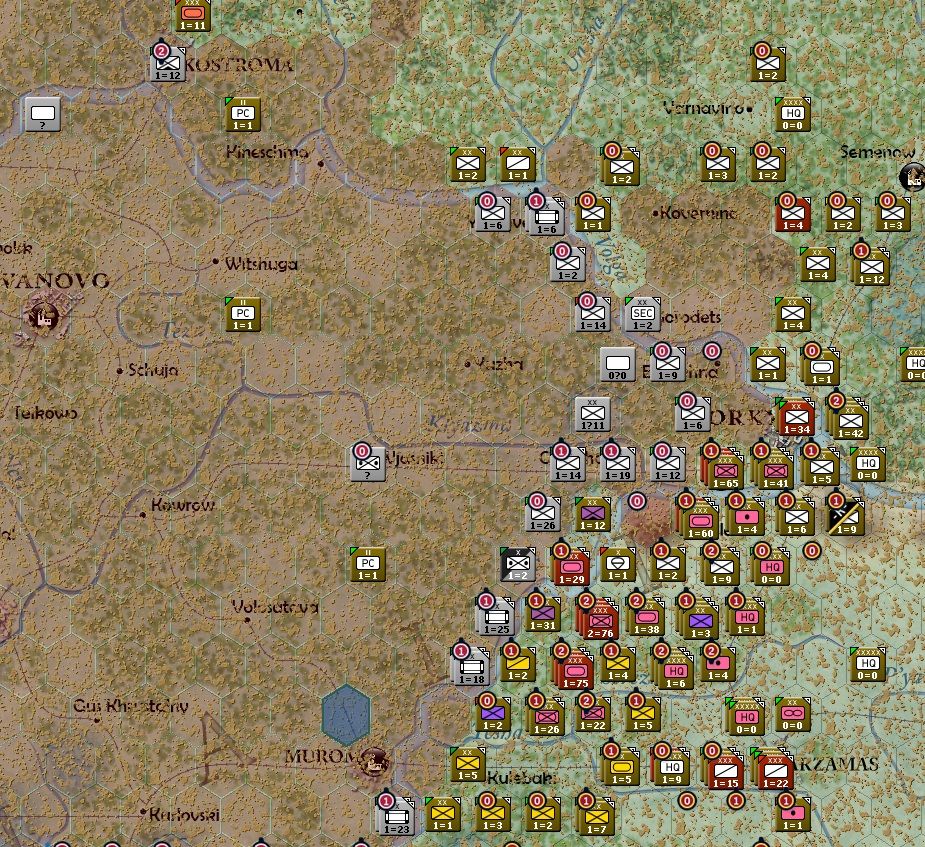
Smolensk in the west changed hands and was returned again to Soviet control.
Southwest of Mogilev, General Vatutin's Bryansk Front has advanced beyond the Drut River towards the Berezina. Ther Red Army stands 100 miles from Minsk.
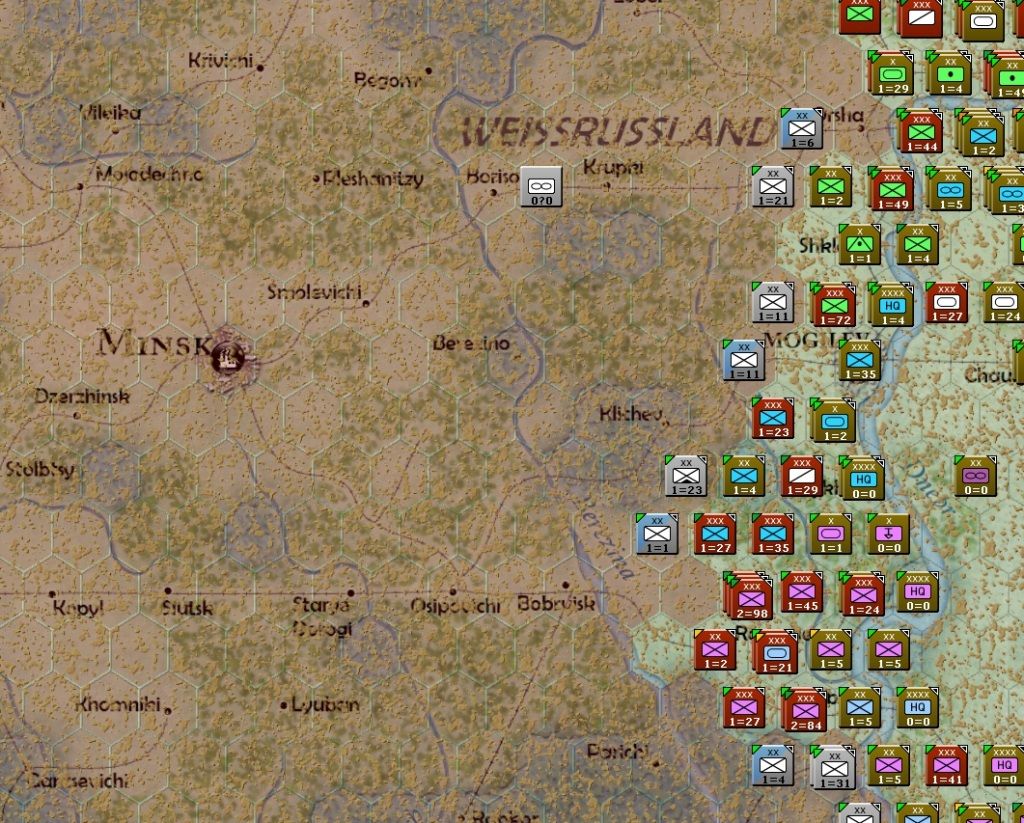
In the Dnepropetrovsk Region, operations are largely suspended due to the loss of the previously mentioned 9 guards rifle corps and mud. New formations are slowly being raised to replace the lost units.
The biggest news may have come in week 97 when the nineteen week drought in the arms pool finally ended with 25,000 accumulated. By turn 100 it was over 100k. This will allow for some stepped up production in artillery divisions that had been suspended for a while. In Week 97 there were two personnel changes.
N Gusev takes command of 10th Army- Western Front from N Medvedev.
V Glagolev takes command of 50th Army- Bryansk Front from Stepan Chernyak.
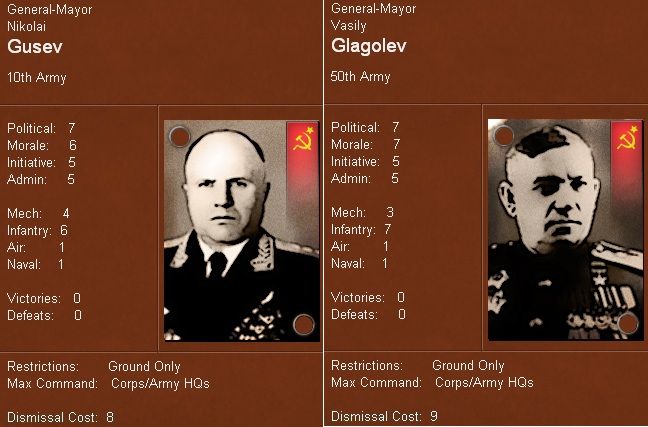
April saw Ivan Chernyakhovsky of 2nd Shock Army promoted for the second time this year, now to General-Polkovnik.












